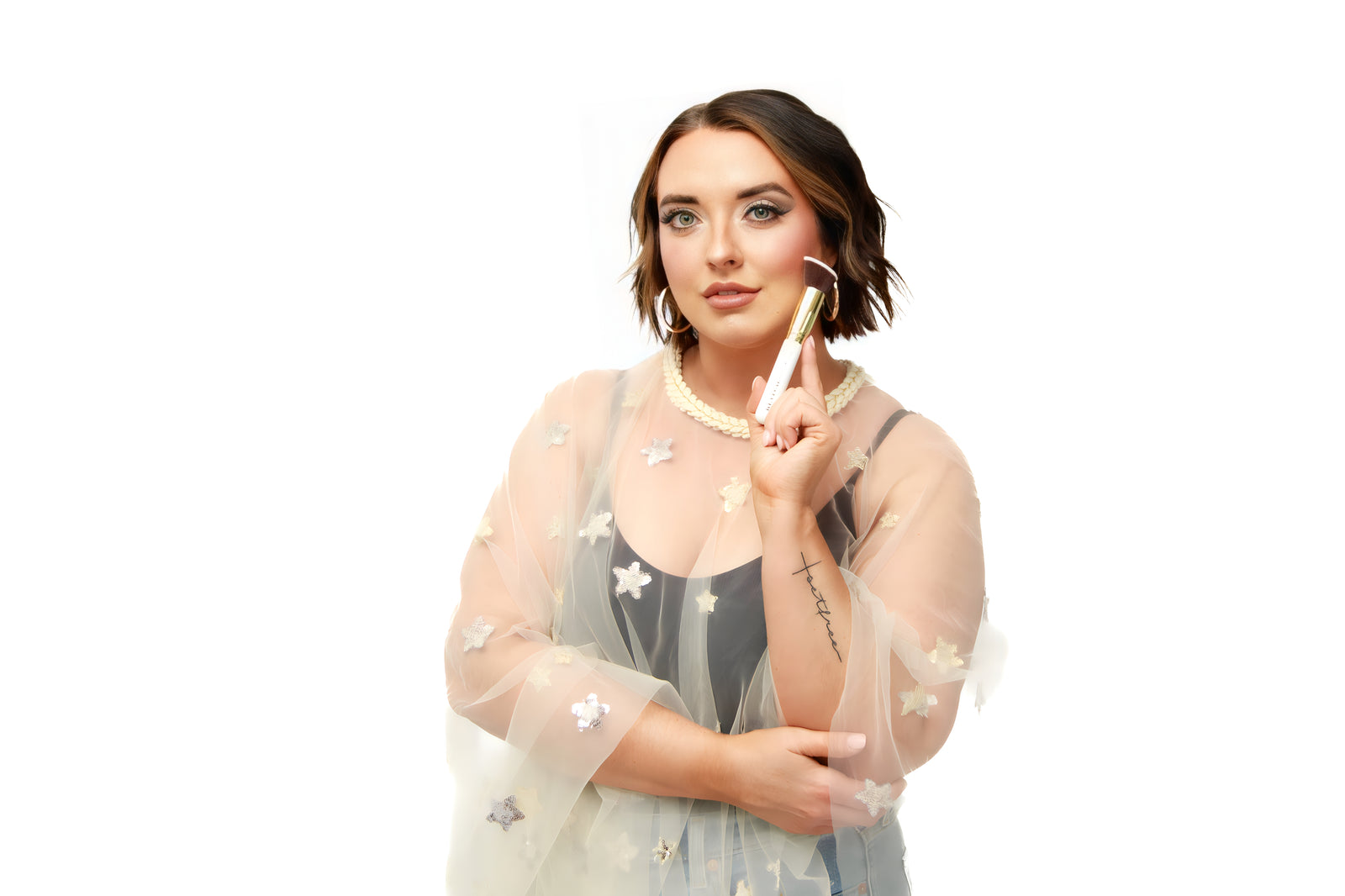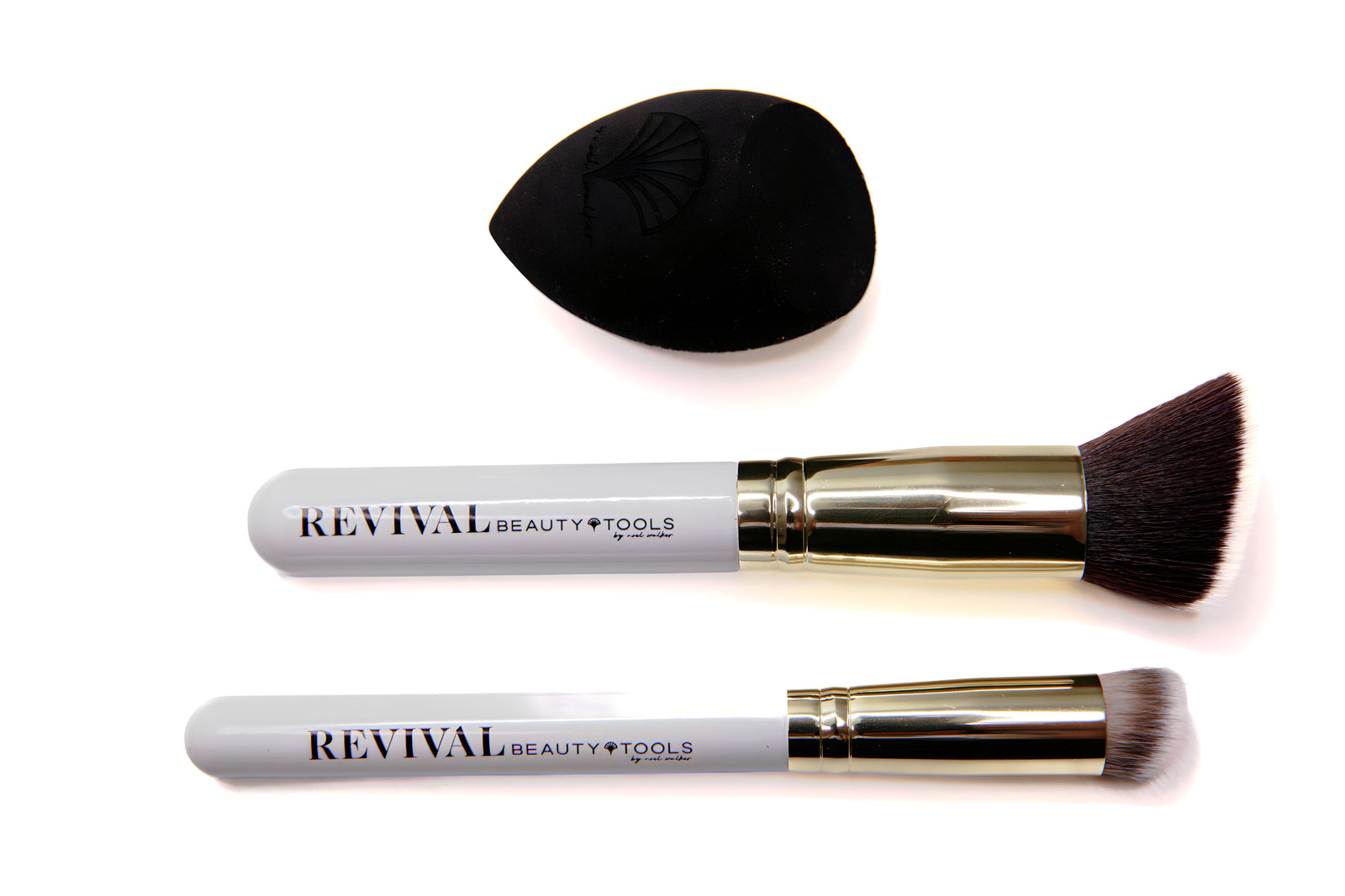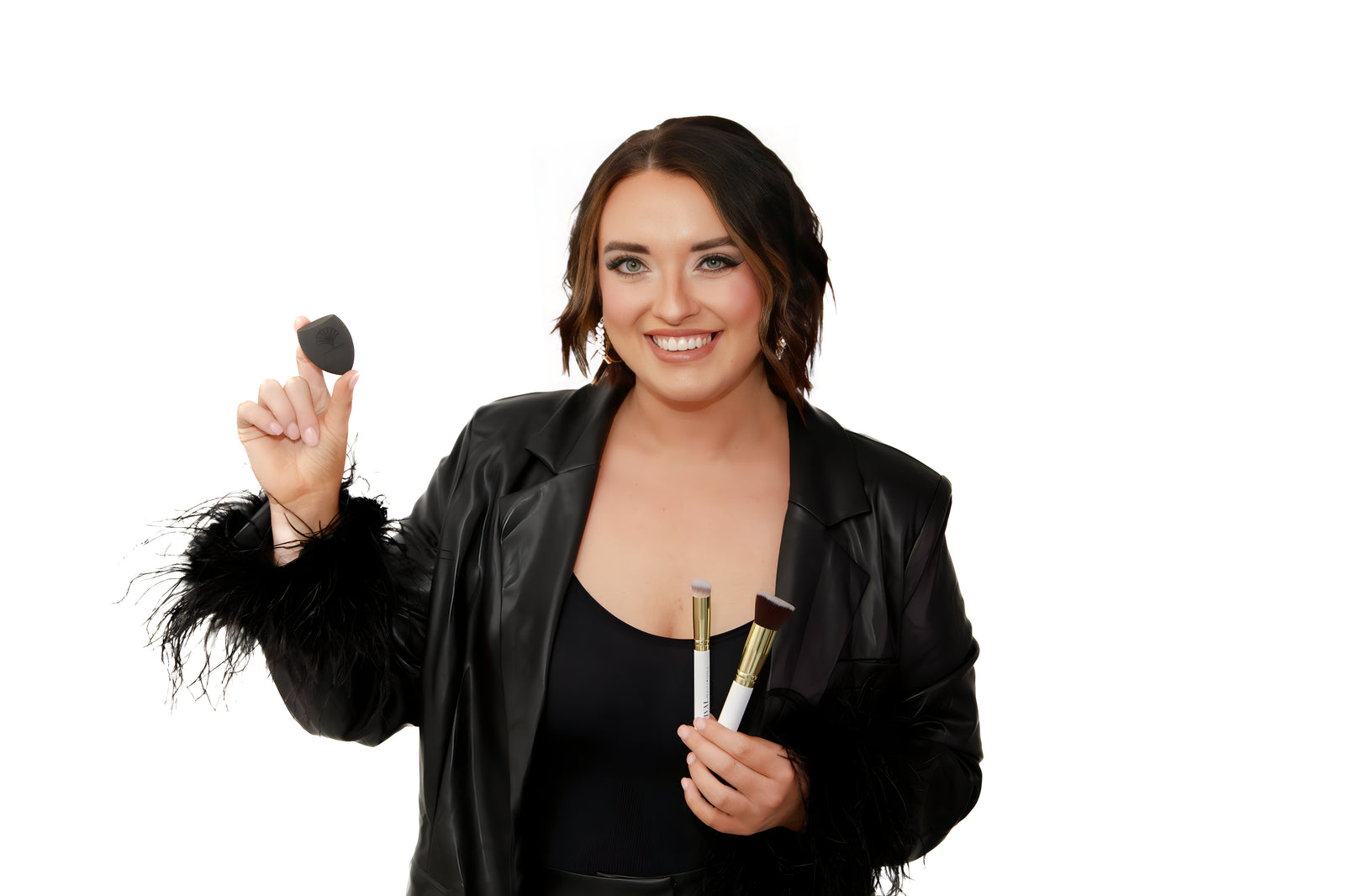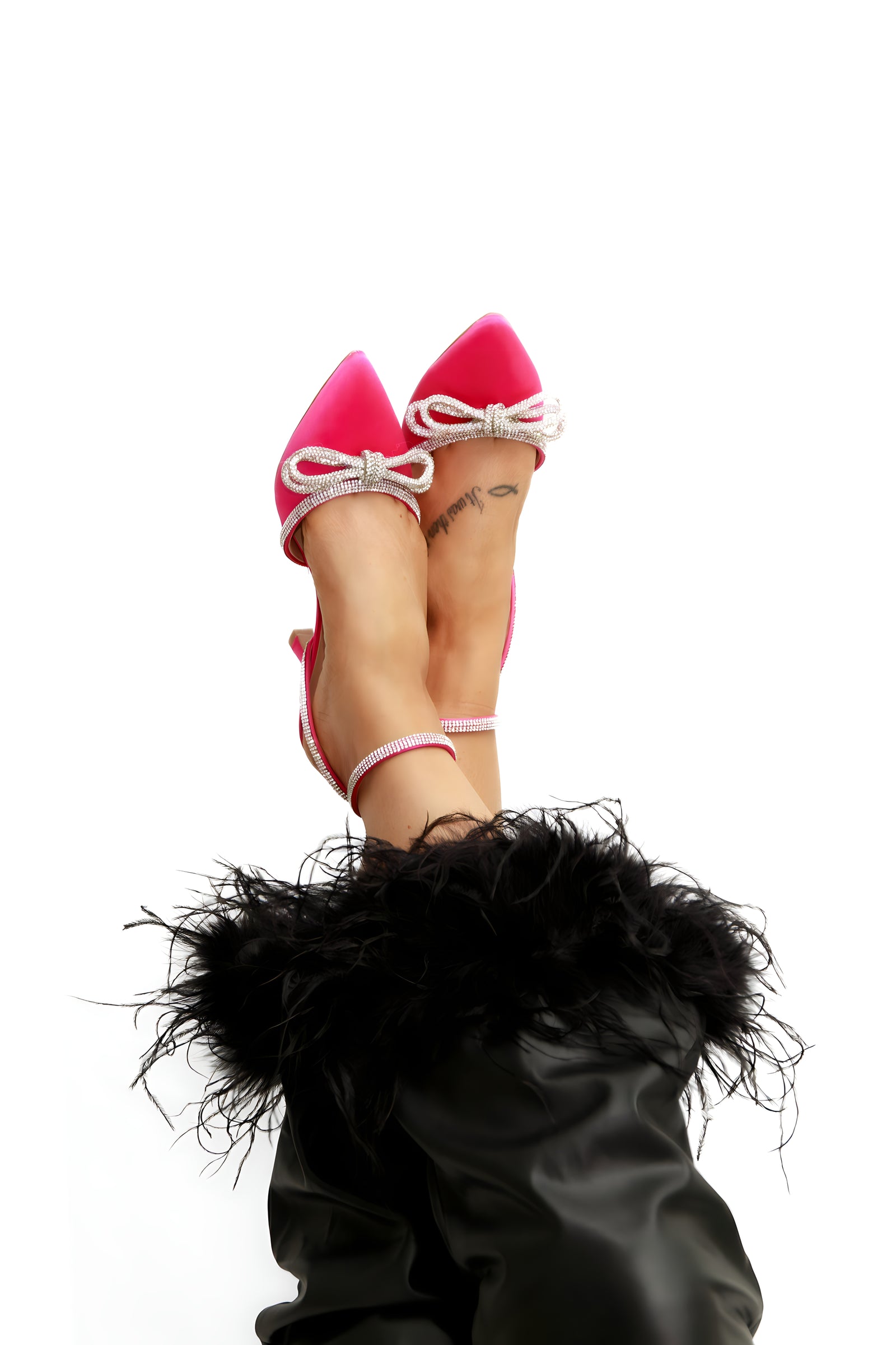Every woman deserves to feel radiant, confident, and spiritually whole. Curating an intentional beauty routine and knowing how to use makeup as a transformative tool helps you reclaim and amplify your inner strength, and it all starts with asking the question:
"What is my makeup color palette?"
Your skin tones are a unique fingerprint that influences how colors interact with and enhance your natural features. Understanding whether you have neutral, warm, or cool undertones allows you to figure out what color palette makeup to use to face the world with renewed confidence. In this article, I'll explain how to find the right color makeup for your skin tone so you can revive your beauty routine.
Key Takeaways
- Your skin undertones impact how color appears on your skin. Understanding what your skin undertones are helps you uplift your beauty routine and curate a more flattering look!
- You can have warm, cool, or neutral skin undertones. Each undertone works well with a different set of colors 🎨
- You can also use your skin and eye color to create the best makeup color palette for yourself.

Understanding Undertones: The Foundation of Your Makeup Color Palette
Undertones are the subtle hues beneath the surface of your skin that influence how colors appear on you. When curating your beauty routine, it's important to understand what your skin undertones are to choose makeup shades and flattering colors that enhance your natural features.
Undertones are generally categorized intothree main types: warm, cool, and neutral.
- Warm Undertone: If you have warm undertones, your skin tone might have a golden, peachy, or yellowish tint. People with warm undertones often look good in medium earth tones, warm brown, orange, and yellow.
- Cool Undertone: Cool undertones manifest as hints of blue, pink, or purple beneath the skin's surface. Those with cool undertones may find that colors like blue, purple, medium brown, and pink complement their complexion and skin tone.
- Neutral Undertone: Neutral undertones have a balance of warm and cool tones, and the skin tone may display a mix of both. Individuals with a neutral skin tone have the flexibility to experiment with a wide range of colors, as they can often pull off both warm and cool shades.
If you have ever felt that nothing is ever working out for you when it comes to makeup, it might have been because your makeup didn't match with your skin tone. Here's how to determine whether you have neutral, cool, or warm skin tones.
How to Determine Your Undertones
1. The Vein Test
Examine the veins on your wrist in natural light – do they appear more greenish or bluish? A greenish tint suggests warm undertones, while blue veins or purple veins indicate cool undertones. If you observe a mix of both, you may have a neutral skin tone.

2. The Jewelry Test
Experiment with gold and silver jewelry. Does one metal complement your skin tone better than the other? Gold often enhances warm-leaning undertones, while silver tends to favor cool undertones and fair skin. If both shine equally on you, your skin tone might be neutral.
3. The Sun Exposure Test
Consider how your skin reacts to sun exposure. If you tan easily with a warm, golden glow, you likely have warm tones. If you have pale skin that tends to burn first and then tan, your skin tone may be cool-leaning.
Color Wheel Basics: How to Find Your Makeup Color
Once you determine your skin tone, it's time to explore your color wheel and figure out what makeup colors work best with your complexion.
The color wheel is exactly what it sounds like. It's a visual representation of colors arranged in a circular format, pretty much like a wheel! It helps women choose and combine makeup shades harmoniously. It also allows you to understand the relationships between different colors and how they can complement or contrast with each other on the skin.
1. Warm Colors
Radiant reds, fiery oranges, sun-kissed yellows, and inviting warm browns populate this spectrum. If you have warm undertones, these colors will resonate beautifully with your complexion ❤️
2. Cool Colors
From calming blues and lush greens to regal purples and cool-toned browns, this palette is the perfect match for those with cool undertones. These hues effortlessly complement cooler complexions such as blue undertones or pink undertones.
3. Neutral Colors
Beige, taupe, and gray stand as versatile anchors of makeup color palettes. They gracefully adapt to a variety of undertones, making them essential for women with neutral undertones.
"What Is My Color Makeup Palette?": Curating Your Makeup Products
Now that you understand what your skin undertones and color wheel are, it's time to curate your beauty and makeup products to complement your complexion and confidently revive your beauty. The truth is that you don't need countless makeup products - you just need to intentionally choose the select few that unveil your beauty and make you feel unstoppable.

1. Foundation and Concealer
Finding the right foundation and concealer helps you create an even skin tone, cover imperfections, and provide a base for the rest of your makeup. You can apply your foundation all over your face and use the concealer - which is more concentrated than foundation - under your eyes or over blemishes.
- Warm Undertones: Look for foundations with labels like "warm," "golden," or "peach." These will have yellow or golden undertones that compliment warm skin tones.
- Cool Undertones: Foundations labeled "cool," "rosy," or "pink" are suitable. They contain undertones that enhance cool skin complexions.
- Neutral Undertones: Opt for foundations labeled "neutral" or "beige." These shades are formulated to balance both warm and cool undertones.
The right foundation/concealer shade should seamlessly blend into your skin without creating a noticeable contrast. Always check the foundation in natural lighting to ensure it matches your skin tone accurately!
2. Blush and Bronzer
Blushes and bronzers add color and dimension to your face, enhancing its natural contours and creating a radiant glow. You can apply your blush to the apples of your cheeks for a natural flush. The bronzer should go to the parts of your face where the sun naturally hits, such as the high points of your forehead, cheekbones, and the bridge of the nose.
- Warm Undertones:Peachy or coral blushes and warm-toned bronzers add a sun-kissed glow to your complexion, enhancing your radiant warmth.
- Cool Undertones:Rosy or berry-toned blushes and cool-toned bronzers are your go-to for a subtle flush and delicate contouring.
- Neutral Undertones:Dusty rose blushes and neutral bronzers strike the perfect balance for a beautiful look.
When applied, the blush and bronzer should naturally mix with your skin tone, but you can play with different shades depending on whether you want a more casual or dramatic look!
3. Eye Makeup
Eye makeup, such as eyeshadow, eyeliner, and mascara, elevate your eyes as the focal point of your face and enhance your beauty. Eyeshadow adds color and dimension to the eyelids, eyeliner defines the eyes and enhances their shape, and mascara lengthens and darkens the eyelashes for a more pronounced look.
- Warm Undertones:Earthy browns and golden hues create a captivating gaze.
- Cool Undertones:Experiment with blues and purples for vibrant shades and a mesmerizing effect.
- Neutral Undertones:Taupe, soft browns, and beige work well with neutral undertones.
When choosing eye makeup, you should also take into consideration your eye color. For green eyes, golds, purples, rich browns, burgundy, and pinks work well. Brown eyes go together with golds, deep purples, warm coppers, deep greens, and blues. For blue eyes, try copper, rich brown, or peach.

4. Lip Colors
Lipstick, lip gloss, lip liner, and other lip makeup tools enhance the appearance of your face with a graceful glow.
- Warm Undertones:Embrace the warmth with coral, orange, and warm red lipsticks that accentuate your warm features.
- Cool Undertones:Berry shades, cool reds, and pinks complement cool undertones, adding a touch of sophistication to your lip look.
- Neutral Undertones:Versatile nudes, mauves, and roses create a balanced and timeless lip aesthetic.
It's a good idea to have a few of your favorite lip colors on hand to experiment with your appearance to match different moods, outfits, and aesthetics!
Skin Tone and Your Makeup Color Palette
Your skin tone plays an important role when choosing your makeup color palette.
If you have fair skin, light shades, such as light pinks and beige tones will emphasize your natural complexion while yellows and oranges will wash your fair skin out. For medium skin tones, medium shades like neutral blues and yellow undertones will elevate your hair, eyes, and skin colors. Dark skin tones work well with bright colors like red, orange, gold, yellow, and bronze.
Frequently Asked Questions
How do I find my makeup color palette?
To find your makeup color palette, it's important to understand what your skin undertones are. There are three types of skin undertones: warm, cool, and neutral. Women with warm undertones will look good using colors like golden yellow and warm brown. Cool undertones benefit from colors like light blue. Neutral skin tones pair well with beiges and soft browns.
How do I know my makeup colors?
To find your makeup color, you should evaluate your skin tone to understand what your skin undertones are. You can do the vein test, the jewelry test, or the sun exposure text to determine what skin undertones you have. Skin tones are generally separated into warm, cool, and neutral undertones.
How do I know what color makeup looks good on me?
If you have warm undertones, warm colors, such as reds, oranges, and browns will complement your complexion well. If you have cooler undertones, blues, purples, and light browns can be a good choice. Neutral skin tones will look wonderful with beige or taupe.
How do I find the right makeup for my eye color?
Finding the right makeup for your eye color depends on your skin undertones as well as your eye color. Green eyes work well with gold, purple, brown, burgundy, and pink shades. Copper, brown, and peach complement blue eyes. If you have brown eyes, use golds, deep purples, warm copper, deep greens, and blues to elevate your look.
Final Thoughts: How to Find Your Makeup Color Palette
Finding your makeup color palette helps you identify the most flattering colors for your skin tones and overall complexion. It allows you to find beauty products that enhance your natural beauty, save time and effort, and create a cohesive look that boosts your sense of confidence and self-worth. To find your makeup color palette, identify your skin undertones and purchase makeup products that work well with your natural features.




